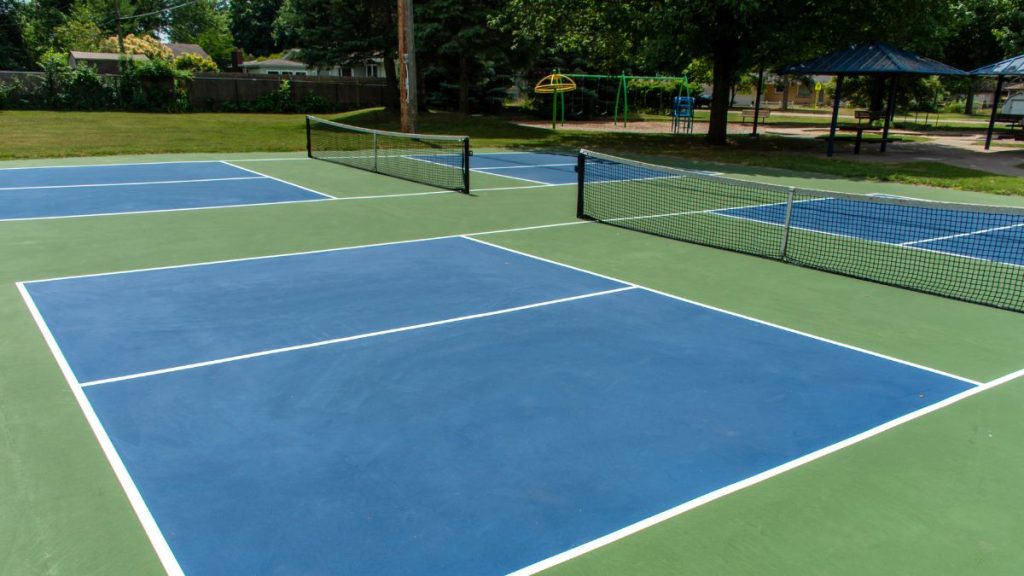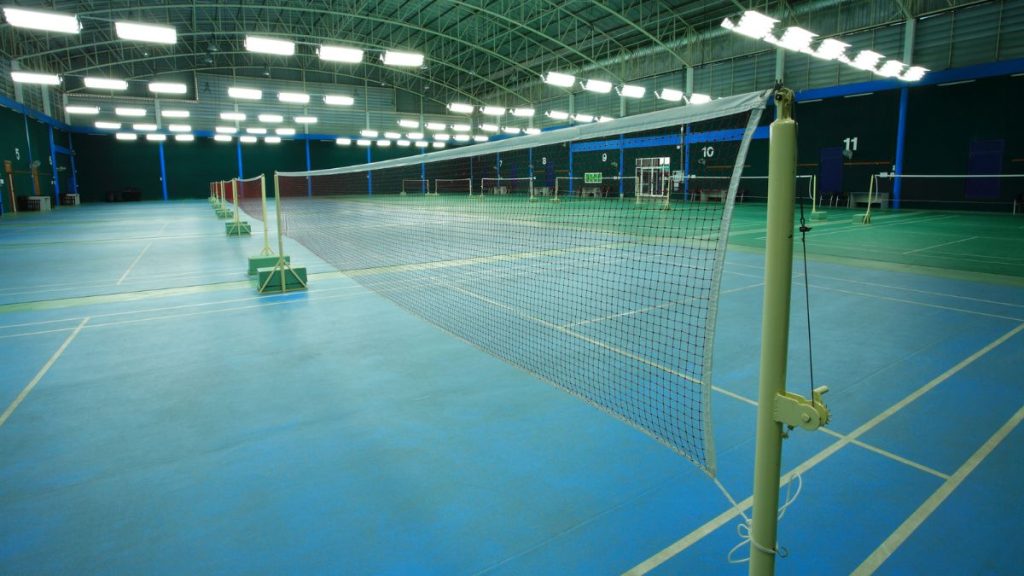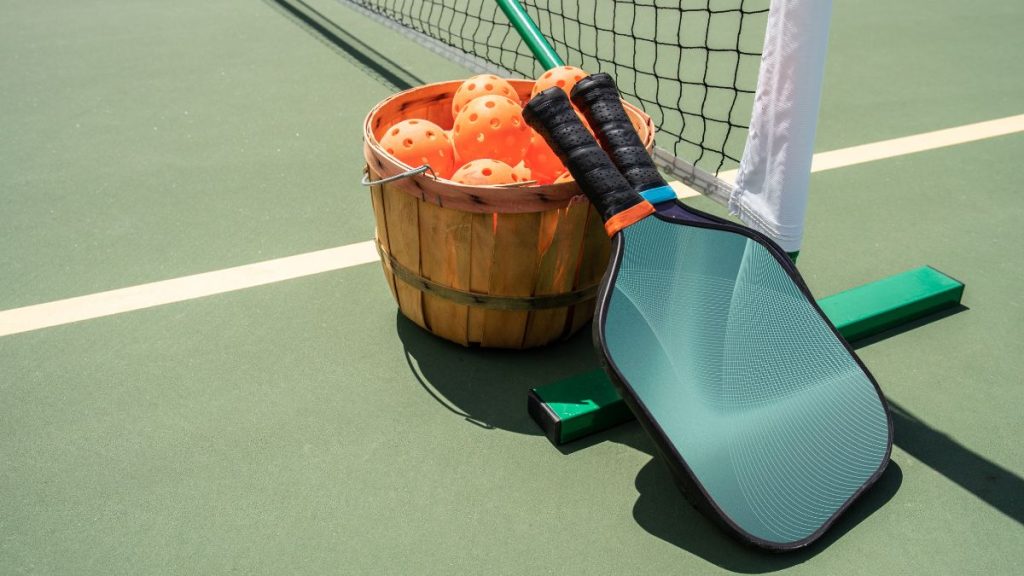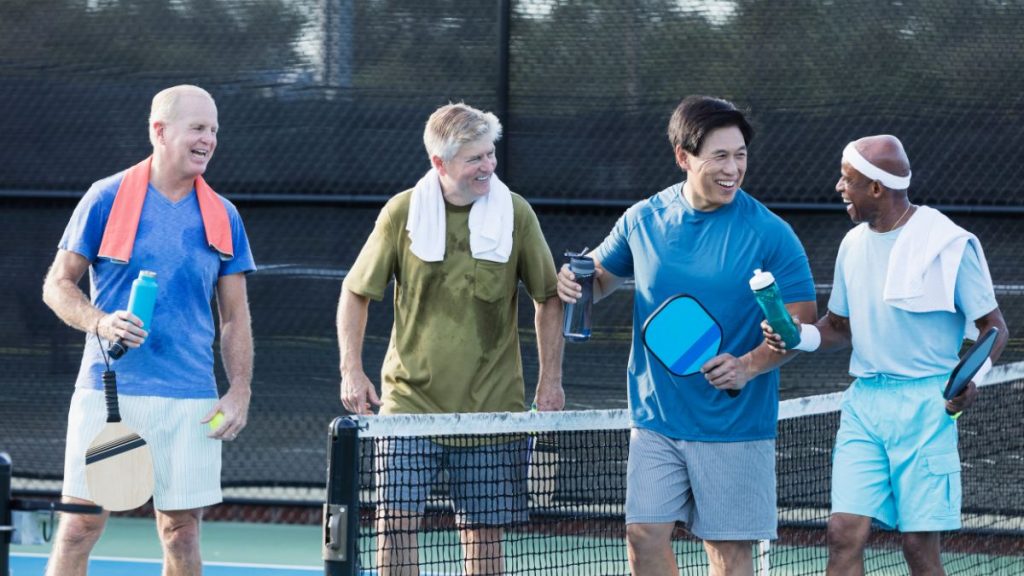Learning the norms of a new sport is an undertaking. Learning the rules is a prerequisite to breaking them. In Pickleball, you’ll be able to dominate the court more effectively if you’re familiar with concepts like the No Man’s Land. So what is the No Man’s Land in pickleball?
The space of the pickleball court between the non-volley zone and the baseline is known as “No Man’s Land,” or the Transition Area. It is often located two feet behind the Non-Volley Zone (or Kitchen) and two feet in front of the baseline.
Is There a No Man’s Land in Pickleball
No man’s land is a word adopted from tennis and used in pickleball. No man’s land sounds ominous, especially for a player who is just starting to learn the ins and outs of the game. Do not worry, though; it is not as menacing as it seems. It is only a place on the court that most players try to avoid.
It is an area where most players have difficulty winning points. When it comes to no man’s land, only a select few can traverse smoothly through the area and come back with a win. These players are seasoned and have put in the hours of practice to be able to come back triumphant.
To be an effective player in Pickleball, you must know your strengths and weakness, and playing inside the no man’s land is certainly a liability as your opponent can drop the ball down your feet which means it will be harder to pick up and return. Just think of it as the Bermuda Triangle, where Pickleballs land and rarely return to where they come from.
There will be instances when you can return the ball, but it will more than likely result in your opponent getting an easy way to return it to you and get the point. Only professional Pickleball players with hours and hours of practice can go to the no man’s land and live to tell the tale.
What Is the Transition Zone In Pickleball?
No Man’s Land is also called the Transition Zone. Playing at the Non-Volley Zone Line results in the most successful pickleball rallies and point-scoring opportunities.
It is of the utmost importance to progress through the Transition Area to reach the Kitchen Line as quickly as possible. According to the statistics, a player or team’s chances of winning the rally or point increase by ten when they can move into the Kitchen Line.
If you are not very experienced with the game, you will have more success scoring in the kitchen than in the transition zone. The transition zone, often known as the no man’s land, is an uncomfortable area to be in.
Although the transition zone (or “no man’s land”) is a terrible place to be as a novice player who hopes to win, it may become a paradise for the savvy player. Now, it’s crucial to note that the region known as “no man’s land” is also referred to as the transition zone and that it’s not a good location to be if you’re a newbie who wants to win the game. Whether a team wins or loses is typically decided in this area.
Spending more time in “no man’s land” may not be a bad idea if you’re serious about improving your talents. Take complete control of the transition zone as quickly as possible and hone your shooting skills to perfection. They’ll be licking your hand if you keep behaving like this.
Factors to Consider to Improve Your Game in the Transition Zone
- Stay loose on no man’s land
The more you feel familiar with no man’s land, the better it will be for your advantage. Not everyone would like to stay there but not you. You will feel comfortable where no man would like to stay and, therefore, will take every opportunity to get that score.
- Stay in the zone
Practice indeed makes perfect, and the longer you spend in the transition zone, the more confidently you’ll be able to handle the challenges of this uncharted region. So instead of spending time in the kitchen, focus on keeping an eye on the price and honing your talents in the transition zone.
- Stay in control
Proper technique is key, so no matter how long you stay in the transition zone, it will not make too much sense if you still did not learn proper paddle control.
- Stay low
To become lower and more steady while exerting greater force, a broader stance is recommended. It’s crucial to bend down on your hands and knees. This holds true whether you or your spouse like to take high shots.
- Stay under control
Splitting your steps or stopping halfway during the transition is a must for an under-controlled entry, so be prepared for it.
How Do You Dig In Pickleball?
Just a heads-up, there will be times when you will find yourself and your teammates’ bit of a pickle, where it would be hard to return the ball from the opponent who has served a put-away shot.
People often lose a point when a pickleball is hit way too high for the opponent to give it back to them unless they master the art of digging out. You’ll have much more success and progress rapidly after you’ve mastered the art of digging out shots.
Because Pickleball and Tennis share similar terms digging in pickleball also means the act of striking the pickleball such that it bounces twice before being struck again. The racket is used downward, much like a shovel, thus the term “digging racket.”
To dig properly, you must widen your base and keep it low. This is done so that you may obtain a good, low base under the ball and generate as much height as possible while returning the ball, increasing the likelihood of sending it flying back toward the baseline.
Is Stepping in the Kitchen a Fault in Pickleball
The region seven feet or less from each side of the net is known as the kitchen. Volley is not permitted to be played in this particular location of the court (striking the ball before it bounces). Because the kitchen takes up just the width of the court, you are permitted to stand on the side of the court that is not designated as a volley zone; nevertheless, it is recommended that you do not do so in most circumstances. The lines constitute a section of the area that is off-limits to volleys.
What You Need to Know When You Are Inside the Kitchen
- It violates the rules if you hit a volley or are struck with the ball when you are in an area that is not allowed for volleying. Because of this, staying at that location is not the best option. Nevertheless, it is beneficial to get into the kitchen in case a dink or drop shot is coming up. It is also more favorable for you if you get back out as soon as possible.
- You are well aware that you cannot hit a volley if you are simultaneously working in the kitchen. After you have completed a volley, you are not allowed to let your momentum carry you into the kitchen. Even if you are the one striking the ball, you are still required to follow this regulation. After making contact with the ball, a player should continue moving in the same direction to keep their momentum flowing. When a player regains their balance or stops moving forward into the non-volley zone, momentum stops. Momentum may also be lost when the ball hits a player. Because of this, it is not feasible to make a running start outside the kitchen, jump into the air to hit the ball while it is in the air, and then land in an area that is not deemed a volley zone. You can’t go forward to hit the ball and then make a beeline for the kitchen after a volley. That would be impossible. That would not be correct in any way. It makes no difference whether the ball is considered out of play before entering the kitchen; what you did was still incorrect.
- You must exit the kitchen before you may volley the ball if you find yourself there for whatever reason. Therefore, it is impossible to strike a volley near the net by leaping backward from inside the kitchen or smashing a volley while retreating out of the kitchen. It’s important to have both feet firmly planted on the ground outside the kitchen before launching a salvo inside.
Final Thoughts
Learning a new sport can be daunting sometimes but do not worry if you spend enough time on the court; you will soon learn all of these rules by heart. The important part of learning the sport is having fun so you would not get burdened by its many new terminologies and laws. This sport is meant to be enjoyed, so grab a friend and start swinging your paddles for some exercise.




